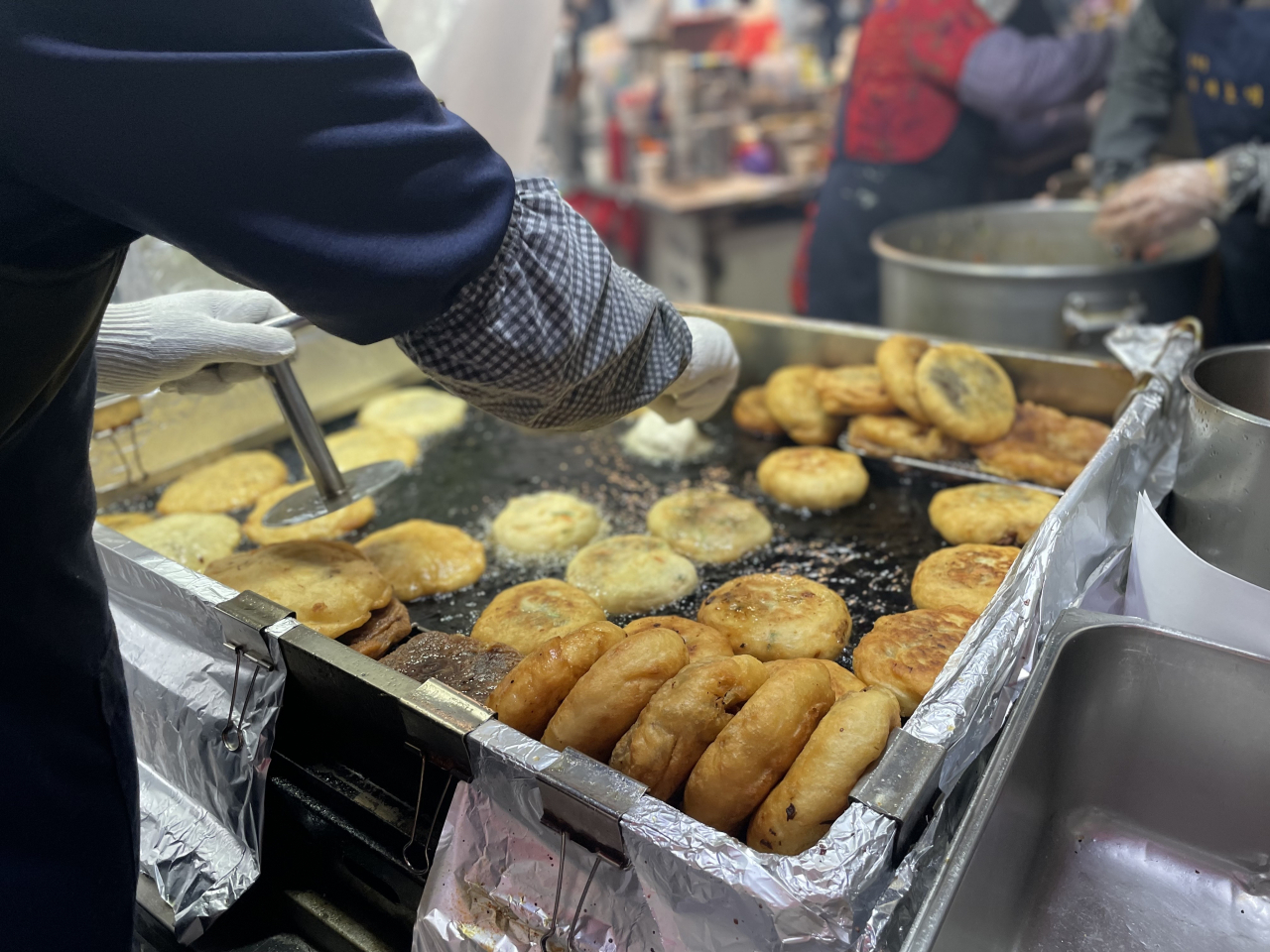
On a cold winter's day, the aroma of freshly baked goods is hard to resist. As you look around, you will soon spot people clutching bags of hot and humble delicacies, perfect for snacking on as they walk Seoul's icy streets.
From hotteok and steamed corn to roasted chestnuts, there are seemingly endless varieties of winter snacks to help you beat the cold.
With temperatures below zero on most days and brisk winds, Korean winters are an ideal time to enjoy some of the nation's most delectable winter snacks that are sure to warm you from the inside out.
As the popular meme on Korean social media platforms says, when winter comes around, make sure to keep 3,000 won in cash on you at all times -- you never know when you will come across a street vendor selling tasty, comforting treats.
Hotteok
Hotteok is a type of filled pancake fried on a skillet. It tastes very much like a donut with a chewy dough and sweet filling. Koreans began eating hotteok in the mid-19th century following its introduction by Chinese merchants passing through Seoul.
While the shape of hotteok has changed over time, the pancake's fillings have also become more diverse. The most common filling is a mix of cinnamon, sugar and some chopped peanuts and other seeds. These days, however, many shops sell different versions of the delicacy, filled with chopped and stir-fried veggies, red bean paste, and even Nutella.
While enjoying hotteok, be careful not to let the gooey, syrupy filling drip on your clothes or hands -- it can be very sticky and hot.
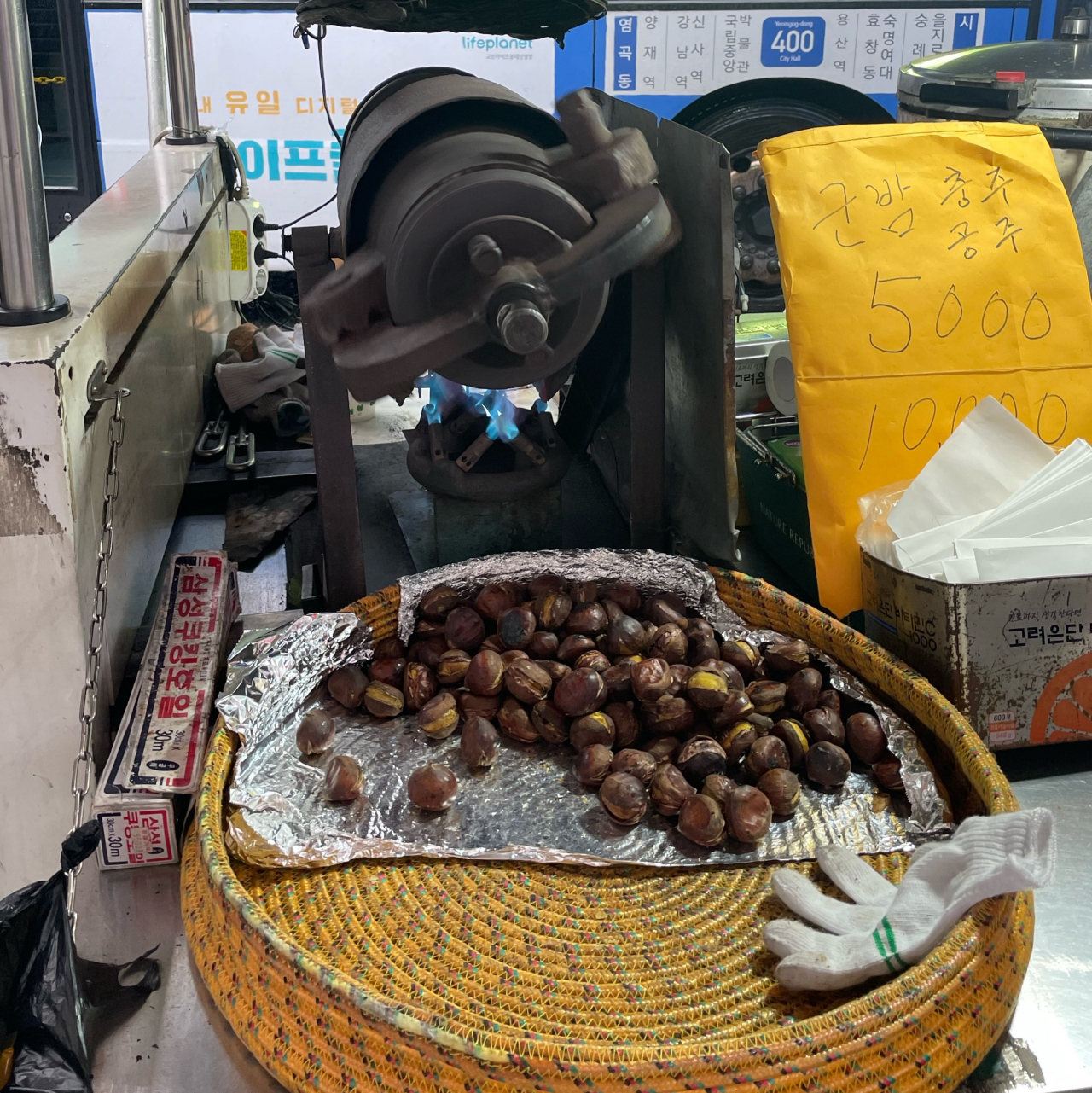
Gunbam
On Seoul's streets, it is easy to spot vendors with a big basket of shelled chestnuts next to a roaster. Those trying the treat for the first time may be surprised by how the roasting process gives chestnuts a tender texture and a pleasant, sweet taste. Gunbam can be a great ass an on-the-go nutritious winter snack that is also affordable, with a bag of 10 to 15 chestnuts costing around 3,000 won. Although this comfort food is favored more by older Koreans, the fragrance of roasted chestnut drifting in the chilly air is unparalleled and creates a sense of nostalgia.
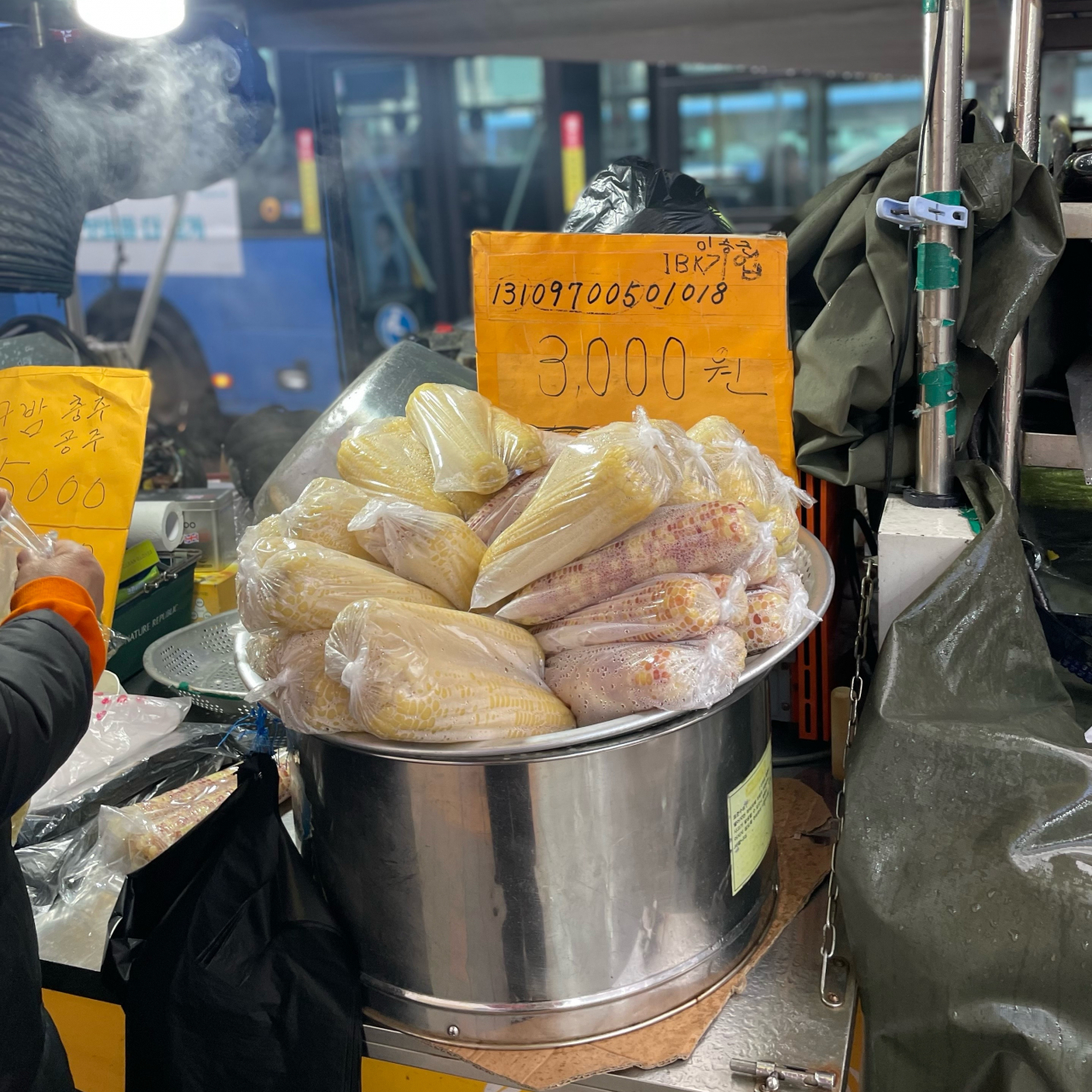
Chal oksusu
Another popular winter snack is chal oksusu, or steamed corn. There is no doubt that this deliciously yellow corn on the cob steamed to just the right warmness and sweetness has to be carried around in the icy weather. Not only does it keep you warm, it also makes for a healthy and filling snack.
The Korean version of the steamed corn is barely salted. Instead, saccharine is added when it is being steamed, offering an umami undertone, which is something you can’t taste when you steam them at home.
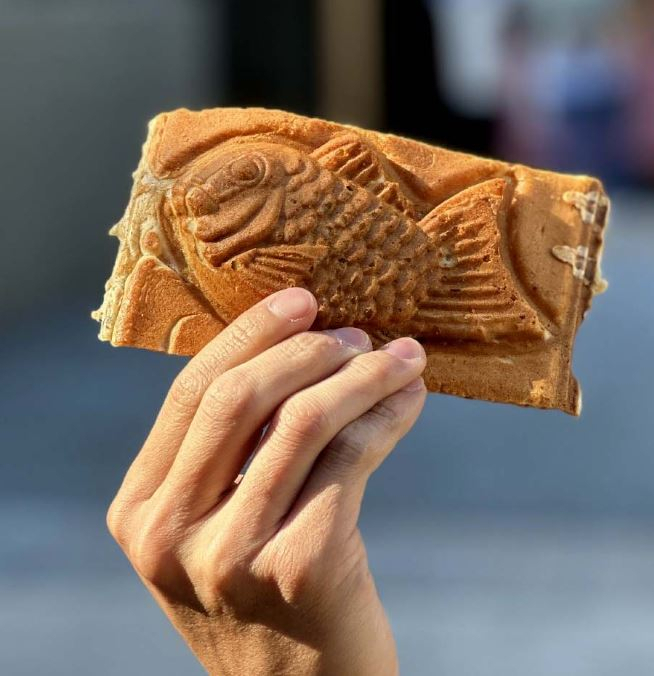
Bungeoppang
Literally “carp bread,” bungoeppang, a fish-shaped bread, is the most commonly enjoyed winter snack food in South Korea. While an average, humble bungeoppang has a mildly sweet red bean paste filling and costs around 2,000 won for three, fancier versions come in a variety of fillings, with some being made from a more buttery pastry that is crispy and akin to a freshly baked croissant.
These days, you can find a wide variety of bungeoppang stalls by the roadside selling their own creative variations of the desert. You won’t be disappointed after trying out the wide variety of different fillings, including custard cream, chocolate, green pea paste, sweet potato, rose sauce, cheese and even pizza.
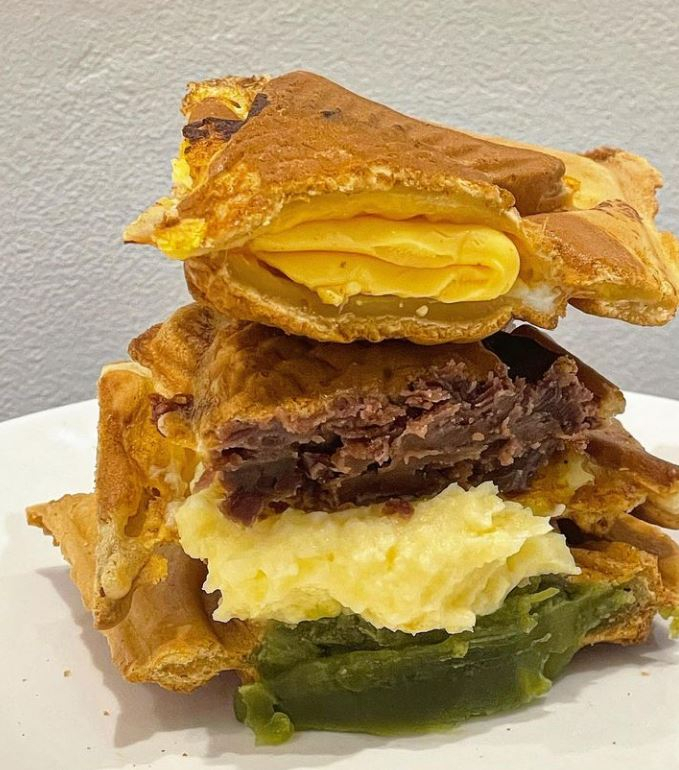



















![[Today’s K-pop] Treasure to publish magazine for debut anniversary](http://res.heraldm.com/phpwas/restmb_idxmake.php?idx=642&simg=/content/image/2024/07/26/20240726050551_0.jpg&u=)